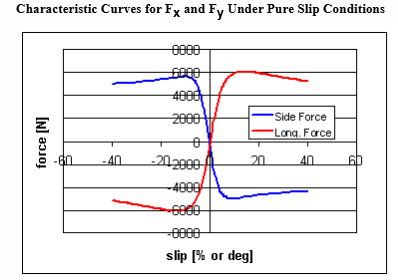Hi Everyone.
I am a bit stuck.
I am running a straight line ADAMS/Car full vehicle model. The vehicle is travelling on low-mu=0.1 and then enters high-mu=0.9. I am tracking the longitude tire force. While on the low-mu the tires are slipping.
I run two load cases (LC#1 , LC#2). LC#2 is the same as LC#1 except the vehicle enters the high-mu with a higher vehicle speed, higher wheel speed and more tire slip. Roughly same tire normal force.
The results predict that the longitude tire force magnitude is roughly the same between LC#1 and LC#2 shortly after entering the high-mu road. I would expect that LC#2 would have a larger tire longitudinal force since it enters the high-mu road with a higher vehicle speed, higher wheel speed and higher wheel slip.
I also reran using PAC89 and see the same trend.
Would the ADAMS/Tire be able to differentiate these two situations and generate larger longitudinal force if the vehicle hits a high-mu road with greater speed...what am I missing?
joe.

